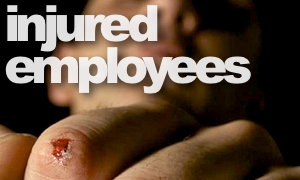Nonprofits and community-based organizations rely heavily on the hard work and dedication of their staff. Unfortunately, these hardworking employees can get hurt in the course of employment. These injuries are most often insured through a worker’s compensation insurance policy.
Once injured, the road to full recovery can often be tedious for both the injured employee and their employer. This first step in ensuring this process is as smooth as possible is a thorough and effective worker’s comp accident investigation. And the first step in an accident investigation is speaking directly with the injured employee to get a full understanding of the circumstances leadin g up to the injury.
g up to the injury.
Six Steps for an Effective Work-Related Injury Investigation
1. Put the Injured Worker at Ease
Regardless of the severity, workplace injuries can be traumatic. Before asking for more information about the injury, ensure that the employee is safe, healthy, and level-headed. Once you feel the employee is comfortable, remind them that you’d like to ask them questions with the sole purpose of preventing a re-occurrence of the injury.
No portion of this meeting should be confrontational or accusatory.
2. Conduct the Interview at the Scene of the Injury
Recalling all of the details surrounding an injury can often be difficult. Conducting an interview in the area the injury occurred can be extremely helpful in jogging the employee’s memory. It will also give the employee the opportunity to physically point out specific exposures.
While there are major benefits involved with conducting the interview at the scene of the injury, always make sure the conversation is private. Never sacrifice confidentiality.
3. Get the Employee’s Version
Be sure the injured worker knows you want his or her version just as they saw it, not “dressed up†for your benefit. Allow them to explain their story fully before asking questions. Do not interrupt to clarify (“Are you saying that… “), interpret (“In other words you mean…â€) or evaluate (“In my opinion…â€). If you don’t understand something, wait until the employee has finished the story, then ask. Above all, don’t make judgments or judgmental remarks. These will only put the employee on the defensive and inhibit your ability to get an accurate story of the events.
4. Fill in the Blanks
If you have any questions after the employee has shared their side of the story now is the time to ask. Limit your questions to facts as much as possible. At this point, you should have a clear understanding of (1) what happened, (2) what was done, and (3) how it was done.
If you must ask “why “ questions (Why were you doing…), wait until you have all other information. These “why†questions can put an injured employee on the defensive. Ask open questions (ones that can’t be answered with a “yes†or “noâ€) whenever possible. These questions will get you much more information. Naturally, all questions should be asked in a friendly, constructive manner.
5. Repeat the Story as You Understand It
Repeating the details of the events that lead up to the injury will accomplish two things. First, it will give the employee confidence that you understood their side of the story. And, if your understanding varies from theirs, it will give the employee the opportunity to clarify. We can often say one thing and mean something completely different, so it is important we completely understand the story.
6. Finish on a Positive Note
The best way to wind up the interview is by discussing actions that can be taken to prevent the accident from happening again. This reaffirms the purpose of the interview in the employee’s mind and will assure further cooperation.
Source: West Bend
